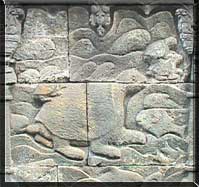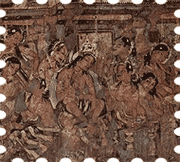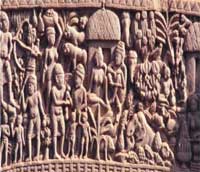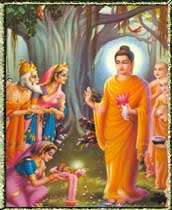INTRODUCTION
The Jatakas is a voluminous body of literature that belongs to India concerning the previous births (jati) of the Buddha. India has always had a rich tradition of oral storytelling, which technique is made use of by various religious preachers to spread their beliefs. According to folklore, Buddha often recited stories from his past lives to teach his disciples the right conduct of life which came to be compiled as the Jatakas. Therefore the Jatakas are Buddhist parables and tales of Buddha in his previous lives (when he was called Bodhisattva or Buddha- to-be), which included incarnations in the form of a snake and an elephant.
As of today, there are a total of 547 extant Jatakas arranged roughly by increasing number of verses. But there are indications that the actual number of Jatakas could be 550. According to Professor von Hinuber, only the last 50 were clear to understand without any explanation. Folklorists are interested in these explanations in the form of short stories. The Cariyapitaka, another book of the Pali Canon contains alternative versions of some of the stories. A number of individual stories can also be found scattered around other books of the Canon.
Many of the stories and motifs found in the Jataka are also seen in numerous other languages and media like the Hindu Panchtantra, the Sanskrit niti-shastra etc. giving rise to the suggestion that many of the stories and motifs are translations from the Pali (the language in which the texts of the Theravada school of Buddhism is preserved) and others are instead derived from vernacular oral traditions prior to the Pali compositions. The Buddhist principles found in the Pali Jatakas are widely seen in Sanskrit Jataka (the Jatakamala) and Tibetan Jataka stories. However, significant amendments have been made in the translation into Persian and other languages to suit their respective cultures.
Several later compositions of made-up Jataka tales in Pali tradition are also there, but they are categorized as separate literature from the official Jataka stories. Some of the apocryphal Jatakas show direct appropriations from Hindu sources, with amendments to the plots to better reflect Buddhist morals. In Theravada countries, several of the longer Jatakas are still performed in dance, theatre, and formal recitation to this day, and most of them are associated with particular holidays on the lunar calendar used by Cambodia, Thailand and Laos.

SIMILARITY TO OTHER LITERATURES
Most of the Jatakas are in the form of folklores with a Buddhist touch. The Jatakas also have a version of the Ramayana which is called the Dasratha Jatakas. The Avadanas, which also form an important part of Buddhist literature, are also closely connected to the Jatakas. The fundamental difference between the two is that in the Jataka Bodhisattva (some of the previous lives of the Buddha) is always one of the characters while any saint can play a part in the latter. This concept of Bodhisattva is central to the Jatakas. However there are many Avadanas, in which bodhisattva is the hero.
Kausilumina and Kasadavata as poetry and Kabavati as drama are based on Kusajataka.In Mahayana literature there are many Jatakalike stories such as Asvaghos's Sutralankara, Aryashura's Jatakamala and Khsemendra's Avadana Kalpalata etc. Indian Sanskrit works like Katha sarit sagara, Dasa Kuamara carita, Panca tantra and Hitopadesa contain similar stories. These stories contributed to the later incomparable works of Kalidasa and Ashvaghosa.
There are also Mahayana jataka stories such as Vyaghri, Dhammasondaka and Seta Gandha Hasti which do not appear in Pali at all. Some jataka stories can be found in Jain literature, such as the story of Isisinga in Suyakadanga, which is the Nalini Jataka. They are found in even the Mahabharata, for example Rsissringa upakhyana. The literature of countries like Persia, China, Arabia, Italy, Greece, Britian and Japan have borrowed ideas and themes from the Jataka and similar other stories.In format the stories are similar to the Panchtantra and lead up to a moral. Here again the morals are bigger than the stories.
TEACHINGS

Another key to Buddhism are the four noble truths - the ideas that came to the Buddha as he reached Enlightenment: (1) All life is mired in suffering, (2) All suffering comes from desire (for objects, attention, wealth, etc.), (3) There is a cure for this suffering, which is the elimination of desire and (4) This can be achieved by following the Eightfold Path.
Teachings of Jatakas The Eightfold Path - the path that the Buddha prescribed for the elimination of desire, and thus of suffering: (1) Right Understanding or Perspective, (2) Right Thought, (3) Right Speech, (4) Right Action, (5) Right Livelihood, (6) Right Effort, (7) Right Mindfulness and (8) Right Concentration.


